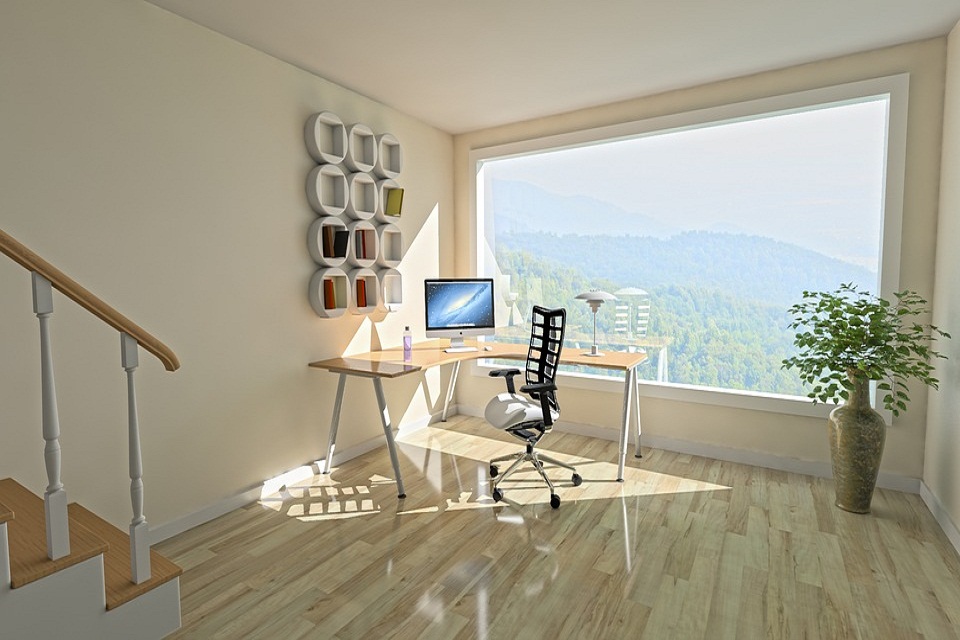You’d be surprised by just how much you can do with those empty spaces in your home once you discover a way to make good use of them.It could be a wide wall area that’s much too blank, a nook that’s too cramped for a dresser, or a room that hasn’t been used for a long time. The main thing here is to introduce not just artful design but function to truly maximize unused areas of your home. There are so many things you can do to achieve this, and you can start with these three tips.
Convert Awkward Corners and Spaces into Storage Areas
Furnishing irregular spaces or awkward corners like those under a slanted ceiling or the staircase can be challenging. At one point, you probably just gave up and left them as they are.One way you can maximize unused areas of your home is by turning them into storage spaces.
Install pull-out drawers or compartments into the space under your staircase where you can store shoes or bags. For those small nooks in between walls, you can tuck an ottoman with a hidden storage compartment where you can put books in, put throw pillows on it, fit a small lamp on the wall, and now you have a reading nook. Have tall windows and you don’t know what to do with the empty space below them? Put low benches with shelves underwhere books can also be stored. If you have a couch in the living room that’s not positioned against a wall, you can put a console table behind it and put bins under.
You can do the same for the space at the foot of your bed by putting a long storage ottoman there. Another idea is to add risers to your bed so you can better use the space under for storage.Do-it-yourself shelves that can be customized to fit those spots under slanted walls should do the trick for that space.These DIY shelvesof different sizes can be fitted with racks, too, for coats.
Turn Walls into Functional Spaces
One technique to maximize Unused Areas on your wall is to think high: look at the high, blank spots on walls and elevate or mount things.Raise mounted cabinets and cupboards a little higher, then install hooks under them so you can hang kitchen utensils, glassware, pots, and pans. You can also install high floating shelves to display ornamental plates, earthenware, enamelware. If you want an alternative to shelves, you can turn that wide, blank wall into a pegboard where you can hang your pots, pans, and utensils.
Floating shelves are also great fixtures in the living room if you want to use them for display items. You can even do this for those corners where adjoining walls meetbyfitting those withtriangular floating shelves. Alternatives to shelves for those corners are indoor hanging or potted plants like ZZ plant, monstera and ficus or a tall and sleek lamp. For walls that can’t be fitted with fixtures or furniture due to lack of sufficient space, you can turn them into a chalkboard where you can write notes and messages. If you can mount your TV on the wall, that would be a good counter space saver.
Notice that wall space around the toilet? You can install a shelving unit that goes around it to store toilet paper, hand towels, and other toiletries in. And, because they’re just that useful, you can install floating shelves or baskets on any blank wall space in the bathroom or above the washer and dryerto serve as cubbies.
Create Dual-Purpose or Re-Purposed Spaces and Things
You know that guest bedroom that’s starting to collect dust because you rarely have guests who stay over? It can serve as an office or study at the same time, too, so you can still make use of it even when you don’t have guests.The key to maximizing these unused spaces is to invest or to DIY multi-functional and space-saver furniture and fixtures. You can put a sofa bedor murphy bed there so you can easily clear up space when no one is using it. Put a cabinet that turns into a modern secretary desk or re-purpose a cabinet that’s built into the wall into a tiny office space — just put in a small desk there, floating shelves for your work stuff, maybe a corkboard for notes or your vision board. You can easily store or hide your office area and use the room as a bedroom again as needed.
You can create dual-purpose for a mirror by putting hinges on it and hiding a small jewelry closet behind it. If your mirror is full-length, you can also do the same and convert the space behind it into a storage area. For radiators that stick out like a sore thumb, you can cover it with lattice woodwork with a countertop where you can put display items or a decorative mirror. Install tension rods behind doors and hang your towels or organize your belts and scarves there. Install shorter tension rods or hooks inside cupboard doors for pot lids and cutting boards





